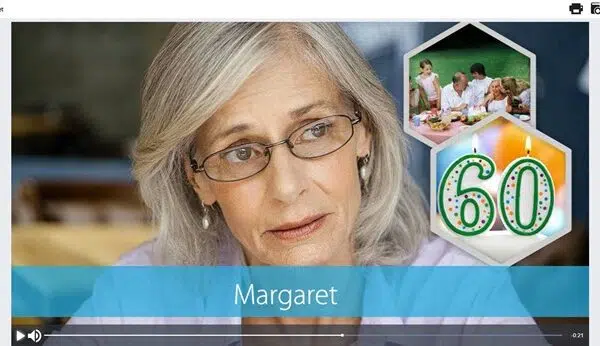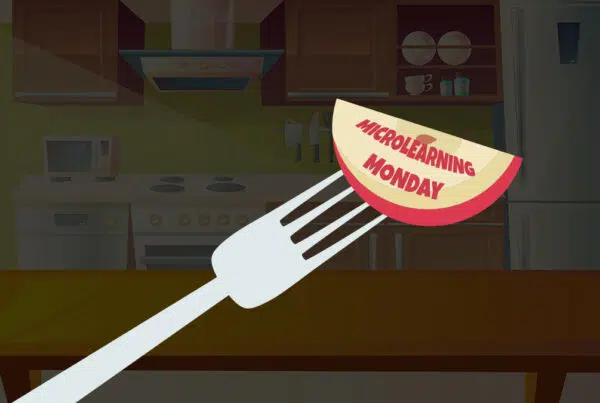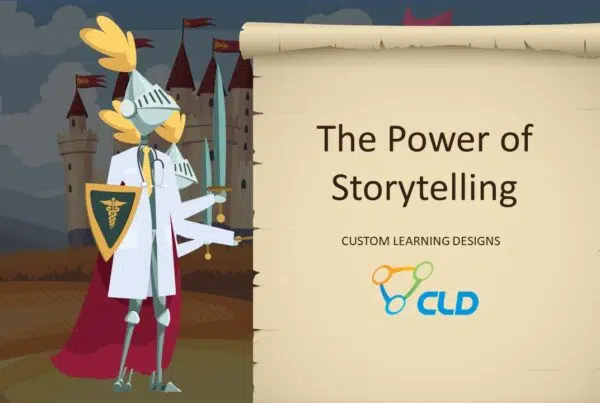ATD 2015 has come to a close. Here is the fourth and final installment of Alicia’s insights and takeaways from the show.
The Accidental Instructional Designer: Designing With Intention by Cammy Bean
I expected the first session after the late night at Universal Studios to have low engagement. However, Cammy immediately brought us all on board with her engaging stories, and encouraging everyone to share their own. There was a sense of comradery as we talked to our small groups about how we “fell” into instructional design.
Here is my story: I went to school with the grand vision of becoming a scientist at a biotech company and changing the world with something life saving (like growing new organs for someone). Freshman year I had 8hrs of lab a day, and that dream fizzled out. I struggled for a bit until I discovered my school had a Technical Communications degree, and I found my niche. The only problem was, I had NO idea what I was going to do with that. After school, I went into retail, with my mom’s voice in the back of my head saying “What are you going to do with your degree.” After a year or so, I found a small job posting for a Medical Writer, and here I am, 10 years later enjoying every day at work.
So, what did I learn today to help me design with intention?
Key Learnings
1. What is your piece of the pie? Learning, Creativity, Technology, Business
- Find your sweet spot
- Fill in your gaps
2. The missing piece in eLearning is often… design
3. What are the qualities of good design?
- Make it feel good
- Make it look appealing
- Make it make us feel human
- Make it intuitive
- Make it solve the problem
4. What is the purpose of design? Design must have:
- Purpose: it must solve a problem
- Intention: Everything must be there for a reason
- Content
5. How do we design better eLearning?
- Know your constraints
- Be a consumer
- Stop… and think… FIRST
- Know the problem you are solving
- Think about the big picture
- Observe, don’t assume (truly know your audience)
- Make it emotional
- Make it intuitive
- Avoid the clicky, clicky, bling, bling
- Make sure interactivity counts
- Rip off the good stuff
6. Knowledge & Skill Builder
7. Design within your box…. Or blow it up!
Where will E-Learning be in 2020? By Craig Weiss
Craig shared with us his very passionate predictions of where eLearning will be by the end of the year, in 2 yrs, and in 5 years. If he is right (and his predictions are self-reported as being over 90% correct) will see much of the new technology today being adopted into training by 2020.
Let’s take a look at his predictions.
Key Learnings
1. 2015: Mobile- One Step Beyond
- On/offline synch of mobile learning
- Features galore
- LMS communicates via SMS (text messages) not E-mail
- LMS skinning
2. 2017: LearnScap
- Virtual reality
- Kinetic/AR
- Personalized learning experience on the LMS
- Advanced Analytics
3. 2020: E-learning hits home
- Virtual reality online
- 90% online learning; 10% instructor lead
- Learning Pods that house microlearning
- Future technology
Visual Storytelling: Engaging Learners Using Pictures by Brian Melven
Visual storytelling is telling a story with powerful relevant images that help us learn. It is based on the dual coding theory in the brain. What is more powerful? A verbal description, a picture, or both. Using both a verbal cue (ie, the word Dog) and an image (ie, a picture of a dog), makes it easier for the learner to recall that information later.
So, how can you visually engage your learner?
Key Learnings
- Comics/graphic novel
- Infographics
- Process maps (ie, flow diagrams)
- Motion graphics
- Whiteboard animations
Vary your methods!
General Session
We ended this year’s conference with the traditional dance party lead by Neville Pritchard the chairman of the ATD International Conference & Exposition Program Advisory Committee. Along with a quick recap of the week. He then introduced us to the Main Event…
UnThink with Erik Wahl
That is the way to end a conference! An inspirational performance about unleashing your creativity and innovative side. As he pointed out by asking “How many people can draw?” and only a brave souls raised their hands. If you were to ask that to a group of primary or secondary school students closer to 80% would raise their hands. If you asked that to a group of preschoolers, every child would eagerly raise their hand. So what happens? Do we let FEAR paralyze our creativity?
Over our lives, we have been trained to produce the 1 correct response, and have become increasingly risk adverse. Our society now has the most disengaged workforce and students. Linear problem-solving is no longer sufficient. We need to reprogram our minds.
Creativity and innovation is a practiced skill that EVERYONE can tap into. The role of training is to ignite the student’s passion for learning.
Have you enjoyed our ATD blog series? Do you have any key takeaways we missed? If so please comment below.
To catch on up on days 1-3 simply click on the buttons provided below.











